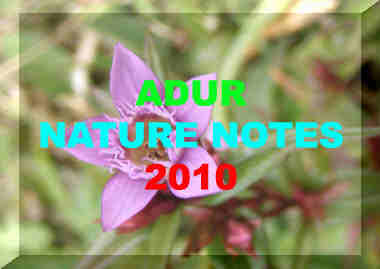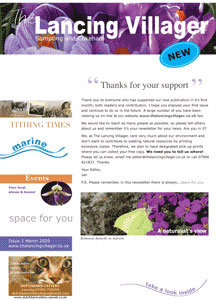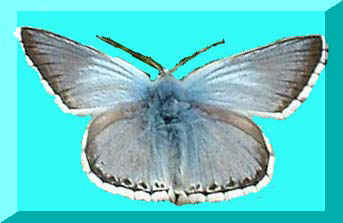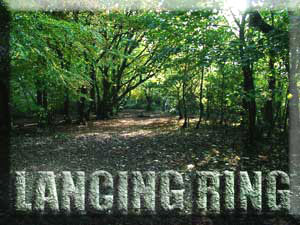 |
|
|
| Another
Map of Lancing Ring |

|
| Trees
of the British Isles
(Yahoo Group) |
 |
| SUSSEX LINKS |
| Findon Village |
| Rye Harbour Nature Reserve |
| Sussex
Archaeology &
Folklore |
| History of Lancing |
 |
 |

Lancing Clump (TQ 180 065)
Click on the map to link to the
Friends of Lancing Ring web site
Lancing Ring and Meadows:The wooded clump area covers about 8.4 acres, the large meadow about 19 acres and McIntyres Field a further 9.8 acres. Other large areas including the large steep western bank, the Chalk Pit, Barton's Wood, with various small spinneys and grass outcrops, and the west facing slopes.
Lancing Ring on flickr
EVENTS22 October 2011
Friends of Lancing Ring
Coffee Morning
Venue: The Holy Family Catholic Church Hall at Monks Farmhouse in North Road, Lancing
Time: 10:00 am - 12:00 pm
Lancing Ring Slide Show (by Ray Hamblett
Sussex Woodsman Display
WILDLIFE REPORTSFor up to date more comprehensive wildlife reports and photographs consult the Friends of Lancing Ring web pages
Link to the 2012 Reports & Links
20 November 2011
Nature Report by Mark Emery (Sussex Woodsman)15 August 2011
The Lancing Ring meadows in the afternoon (after 2:30 pm) were disappointing for butterflies. An estimated 60+ Meadow Browns were the most prevalent species, with 12+ Gatekeepers, occasional 8+ Small Heaths, occasional 9+ Common Blues and just the one male Chalkhill Blue. The Chalkhill Blue was conspicuous and was spotted before it landed on a Hardhead. The think some butterflies may have already been roosting and a search could have revealed more. A pair of Six-spotted Burnet Moths mated on one of the remaining Greater Knapweed flowers (most showed just their silver discs). Hemp Agrimony is attractive to butterflies but the stands on the southern border of the meadows only attracted a few Meadow Browns and one of two Red Admirals. One Wall Brown visited a Hardhead on the edge of the path (in a patch they have been seen before). Speckled Woods were frequently seen in the shade. Later, (after 3:00 pm) McIntyre's Field (east of Lancing Ring) meadow was completely devoid of butterflies, although I disturbed a Silver Y Moth.
Lancing Ring dewpond was dry. A Common Darter (dragonfly) was seen on the margins.3 August 2011
On Lancing Ring Nature Reserve, I spotted plenty of butterflies but the meadows very disappointing. There were hardly any blues seen just two Common Blues and one Chalkhill Blue which was in one of the chalkpits at the far eastern end. One Dark Green Fritillary was seen on the path leading to the chalkpits from Mill Road . It was clearly very old with a large chunk missing from the left wing. I glimpsed two others in the trees up the clump and also three Purple Hairstreaks in one of the rides.Report by Mark Senior by EMailNB: these were first of the year reports for the Dark Green Fritillary and the first ever local report of Purple Hairstreaks.
Adur Butterflies: First Dates
Adur Butterfly Flight Times8 May 2011
We took advantage of the late sunny afternoon to visit Lancing Ring LNR for the first time. In over two and half hours from 2 :00 pm until 4:30 pm we spotted 7 Red Admirals, 1 Peacock, 4 Brimstones, 6 Holly Blues, 1 Wall, 1 Speckled Wood, 10 Small Heath, 1 Small Copper, 15 unspecified Whites (probably Large Whites), 5 Small Blues, 28 Common Blues (of which 4 were females), and 5 Brown Argus.Lancing Ring Report by Colin & Lucia Knaggs on Sussex Butterflies
NB: The Small Blues and Common Blues were first of the year records.
Adur Butterflies: First Dates
Adur Butterfly Flight Times
Adur Butterfly List 20112 May 2011
The first Brown Argus Butterfly of the year in the Adur District was seen at Sompting Abotts.
30 April 2011
The Crosswort, Cruciata laevipes, is a plant found on chalk and limestone soils and is overlooked rather than uncommon.The photograph on the right was taken by Ray Hamblett on Lancing Ring Nature Reserve. It is the first recorded sighting on these Nature Notes pages.
20 March 2011
A Brimstone Butterfly was seen on Lancing Ring.Brimstone Report by Friends of Lancing RingAdur Butterflies: First Dates
Lancing Ring Reports 2010
Lancing Ring Reports 2009
Lancing Ring Reports 2008
Lancing Ring Reports 2007
Lancing Ring Wildlife Reports 2006
Aerial Map
Lower Adur Levels (MultiMap) including Lancing Clump and Mill Hill
EMail Address for sending in wildlife reports from the lower Adur valley
Only a selection will be included and only reports with the name of the reporter
Mill Hill (Link)History of Lancing (Ray Hamblett)
Lancing Ring & Mill Hill Information 1 (requires Acrobat Reader)
Lancing Ring & Mill Hill Information 2 (requires Acrobat Reader)
|
|
|
|
|






